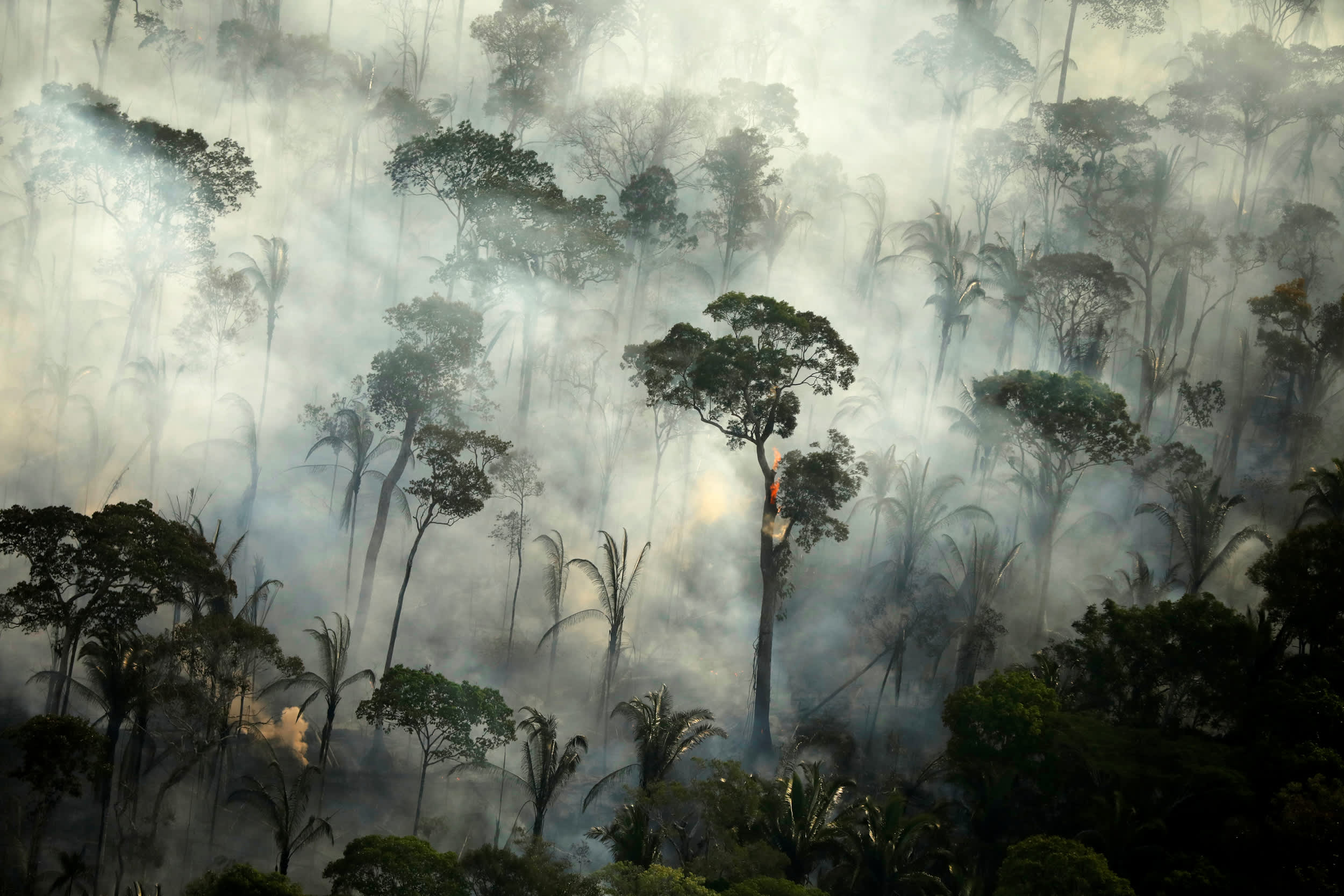
Smoke billows during a fire in an area of the Amazon rainforest near Porto Velho, Rondonia State, Brazil, September 10, 2019.
Bruno Kelly | Reuters
The Amazon rainforest is emitting more carbon emissions than it can absorb, according to a new study.
The rainforest was once a carbon sink — meaning it absorbed more carbon than it released — but it now accounts for more than 1 billion metric tons of emissions every year, mainly due to forest fires and deforestation.
The nine-year research project, published Wednesday, was led by Brazil’s National Institute for Space Research in partnership with scientists from several countries, including the U.S., the Netherlands and New Zealand.
Drones collected samples to measure carbon levels in four locations across the Amazon, with the study’s long timeframe allowing the researchers to account for year-to-year variations in the forest’s carbon levels.
The carbon balance — the final balance between emissions and the absorption of carbon — of the Amazon showed that it released 1.06 billion metric tons of CO2 into the atmosphere per year between 2010 and 2018. According to the study, 0.87 billion metric tons of emissions came from the Brazilian Amazon.
Burning was the biggest source of carbon emissions from the Amazon, according to the research, accounting for 1.5 billion metric tons of carbon emissions. If there were no fires or deforestation, the agency noted, the Amazon would remove almost 0.5 billion metric tons of carbon from the atmosphere.
Researchers found that regions of the rainforest where deforestation levels exceeded 30% had carbon emissions that were 10 times higher than areas with 20% deforestation or less.
The most deforested areas of the Amazon had drier, warmer and longer dry seasons, the study found. Dry months saw a temperature increase of 2 degrees Celsius in these parts of the Amazon, increasing the forest’s flammability and restricting its ability to absorb carbon dioxide.
Emanuel Gloor, one of the researchers based at the U.K.’s University of Leeds, told CNBC the study showed a need for immediate action.
“The data show that forests in large parts of Amazonia, increasingly exposed to heat, are suffering,” he said in an email. “It is yet another wake-up call that the onslaught on Amazonian forests should be stopped urgently.”
Although the Amazon covers ground across nine countries, some 60% of the forest is in Brazil. In the last 40 years, the Brazilian Amazon has lost more than 18% of its rainforest, according to Greenpeace.
In 2019, Brazil’s President Jair Bolsonaro drew criticism for telling a U.N. assembly that the Amazon remained “pristine and virtually untouched” after it emerged that the rainforest was burning at a record rate.
Following mounting international pressure, he later authorized the Brazilian military to battle the blazes. Last month, Reuters reported that Bolsonaro issued a 120-day ban on unauthorized outdoor fires and redeployed the military in an attempt to curb forest fires in the Amazon.




